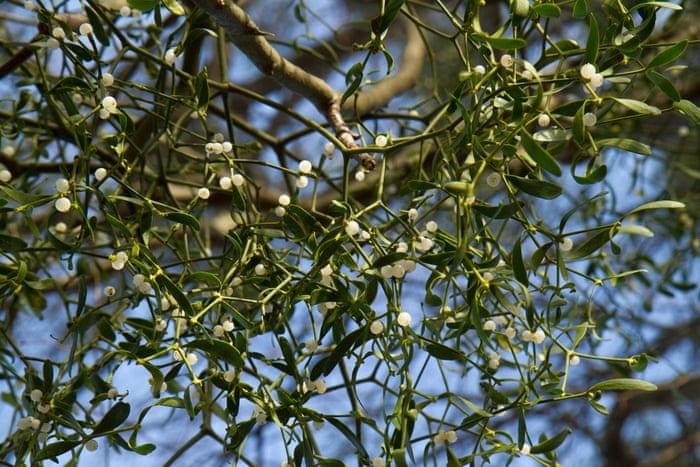Mistletoe is growing well here at Columbine. We have three good bunches of it in a hawthorn tree in our woodland – but its success has absolutely nothing to do with me. It grows when and where it chooses. I have managed to persuade one by squidging a berry into the crack in the bark of the tree, but that was just one out of perhaps twenty attempts and I have absolutely no idea why that particular one worked and the others failed.

Of course the other two didn’t appear by magic. They were spread by birds, mostly thrushes, who eat the berries, find the gooey white flesh that surrounds the seed sticking to their beaks which they wipe clean on a branch. If there is seed in that goo and if the tree has bark with a suitable texture to catch and hold that seed, then it has a chance of germinating and growing.
It is picky about its host. Not any tree will do. Hawthorn is by far the favourite although it grows well on apple trees, limes and poplars. Not all mistletoe has berries – it is dioecious, which means the male plants are separate from the female, and only the latter have berries. This explains why a very healthy ball of mistletoe can be berryless and another nearby much smaller can be covered with them. Note to self – I really must try again with my squidging method and hopefully encourage some to grow in our apple trees in our old orchard at Columbine.
As we go into December the poor garden can feel bedraggled and battered. But the vegetable garden is still important. I like to have as much from the garden as possible for Christmas dinner – Brussels sprouts, potatoes, carrots and parsnips. And I’m going to make sure I cut holly from the garden, make wreaths with dried stems and flowers, put up bunches of mistletoe and fill the house at Columbine with green.
And the present that I shall be giving to myself is the most valuable of all – more blissful days in the garden. We wish you all a very Happy Christmas.
 Kate Elliott came to Columbine Hall in 1997 when she was sixteen. She is now head gardener but also helps with managing the property generally and in conducting guided tours.
Kate Elliott came to Columbine Hall in 1997 when she was sixteen. She is now head gardener but also helps with managing the property generally and in conducting guided tours.